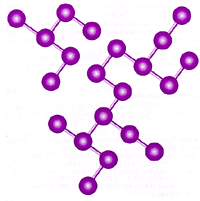What is Industrial Hygiene?
 Industrial hygiene is the science of anticipating, recognizing, evaluating, and controlling workplace conditions that may cause workers’ injury or illness. Industrial hygienists use environmental monitoring and analytical methods to detect the extent of worker exposure and employ engineering, work practice controls, and other methods to control potential health hazards.
Industrial hygiene is the science of anticipating, recognizing, evaluating, and controlling workplace conditions that may cause workers’ injury or illness. Industrial hygienists use environmental monitoring and analytical methods to detect the extent of worker exposure and employ engineering, work practice controls, and other methods to control potential health hazards.
How Are OSHA and Industrial Hygiene Related?
Under the Act, OSHA develops and sets mandatory occupational safety and health requirements applicable to the more than 6 million workplaces in the U.S. OSHA relies on, among many others, industrial hygienists to evaluate jobs for potential health hazards. Developing and setting mandatory occupational safety and health standards involves determining the extent of employee exposure to hazards and deciding what is needed to control these hazards, thereby protecting the workers. Industrial hygienists, or IHs, are trained to anticipate, recognize, evaluate, and recommend controls for environmental and physical hazards that can affect the health and well-being of workers. More than 40 percent of the OSHA compliance officers who inspect America’s workplaces are industrial hygienists. Industrial hygienists also play a major role in developing and issuing OSHA standards to protect workers from health hazards associated with toxic chemicals, biological hazards, and harmful physical agents. They also provide technical assistance and support to the agency’s national and regional offices. OSHA also employs industrial hygienists who assist in setting up field enforcement procedures, and who issue technical interpretations of OSHA regulations and standards. Industrial hygienists analyze, identify, and measure workplace hazards or stressors that can cause sickness, impaired health, or significant discomfort in workers through chemical, physical, ergonomic, or biological exposures. Two roles of the OSHA industrial hygienist are to spot those conditions and help eliminate or control them through appropriate measures.
What is a Worksite Analysis?
A worksite analysis is an essential first step that helps an industrial hygienist determine what jobs and work stations are the sources of potential problems. During the worksite analysis, the industrial hygienist measures and identifies exposures, problem tasks, and risks. The most effective worksite analyses include all jobs, operations, and work activities. The industrial hygienist inspects, researches, or analyzes how the particular chemicals or physical hazards at that worksite affect worker health. If a situation hazardous to health is discovered, the industrial hygienist recommends the appropriate corrective actions.
Chemical Hazards
Harmful chemical compounds in the form of solids, liquids, gases, mists, dusts, fumes, and vapors exert toxic effects by inhalation (breathing), absorption (through direct contact with the skin), or ingestion (eating or drinking). Airborne chemical hazards exist as concentrations of mists, vapors, gases, fumes, or solids. Some are toxic through inhalation and some of them irritate the skin on contact; some can be toxic by absorption through the skin or through ingestion, and some are corrosive to living tissue.
The degree of worker risk from exposure to any given substance depends on the nature and potency of the toxic effects and the magnitude and duration of exposure.
Information on the risk to workers from chemical hazards can be obtained from the Material Safety Data Sheet (MSDS) that OSHA’S Hazard Communication Standard requires be supplied by the manufacturer or importer to the purchaser of all hazardous materials. The MSDS is a summary of the important health, safety, and toxicological information on the chemical or the mixture’s ingredients. Other provisions of the Hazard Communication Standard require that all containers of hazardous substances in the workplace have appropriate warning and identification labels.
Biological Hazards
These include bacteria, viruses, fungi, and other living organisms that can cause acute and chronic infections by entering the body either directly or through breaks in the skin. Occupations that deal with plants or animals or their products or with food and food processing may expose workers to biological hazards. Laboratory and medical personnel also can be exposed to biological hazards. Any occupations that result in contact with bodily fluids pose a risk to workers from biological hazards.
In occupations where animals are involved, biological hazards are dealt with by preventing and controlling diseases in the animal population as well as proper care and handling of infected animals. Also, effective personal hygiene, particularly proper attention to minor cuts and scratches, especially those on the hands and forearms, helps keep worker risks to a minimum.
In occupations where there is potential exposure to biological hazards, workers should practice proper personal hygiene, particularly hand washing. Hospitals should provide proper ventilation, proper personal protective equipment such as gloves and respirators, adequate infectious waste disposal systems, and appropriate controls including isolation in instances of particularly contagious diseases such as tuberculosis.
Physical Hazards
These include excessive levels of ionizing and nonionizing electromagnetic radiation, noise, vibration, illumination, and temperature.
In occupations where there is exposure to ionizing radiation, time, distance, and shielding are important tools in ensuring worker safety. Danger from radiation increases with the amount of time one is exposed to it; hence, the shorter the time of exposure the smaller the radiation danger.
Distance also is a valuable tool in controlling exposure to both ionizing and non-ionizing radiation. Radiation levels from some sources can be estimated by comparing the squares of the distances between the worker and the source. For example, at a reference point of 10 feet from a source, the radiation is 1/100 of the intensity at 1 foot from the source.
Shielding also is a way to protect against radiation. The greater the protective mass between a radioactive source and the worker, the lower the radiation exposure.
Nonionizing radiation also is dealt with by shielding workers from the source. Sometimes limiting exposure times to nonionizing radiation or increasing the distance is not effective. Laser radiation, for example, cannot be controlled effectively by imposing time limits. An exposure can be hazardous that is faster than the blinking of an eye. Increasing the distance from a laser source may require miles before the energy level reaches a point where the exposure would not be harmful.
Noise, another significant physical hazard, can be controlled by various measures. Noise can be reduced by installing equipment and systems that have been engineered, designed, and built to operate quietly; by enclosing or shielding noisy equipment; by making certain that equipment is in good repair and properly maintained with all worn or unbalanced parts replaced; by mounting noisy equipment on special mounts to reduce vibration; and by installing silencers, mufflers, or baffles.
Substituting quiet work methods for noisy ones is another significant way to reduce noise, for example, welding parts rather than riveting them. Also, treating floors, ceilings, and walls with acoustical material can reduce reflected or reverberant noise. In addition, erecting sound barriers at adjacent work stations around noisy operations will reduce worker exposure to noise generated at adjacent work stations.
It is also possible to reduce noise exposure by increasing the distance between the source and the receiver, by isolating workers in acoustical booths, limiting workers’ exposure time to noise, and by providing hearing protection. OSHA requires that workers in noisy surroundings be periodically tested as a precaution against hearing loss.
Another physical hazard, radiant heat exposure in factories such as steel mills, can be controlled by installing reflective shields and by providing protective clothing.
Ergonomic Hazards
The science of ergonomics studies and evaluates a full range of tasks including, but not limited to, lifting, holding, pushing, walking, and reaching. Many ergonomic problems result from technological changes such as increased assembly line speeds, adding specialized tasks, and increased repetition; some problems arise from poorly designed job tasks. Any of those conditions can cause ergonomic hazards such as excessive vibration and noise, eye strain, repetitive motion, and heavy lifting problems. Improperly designed tools or work areas also can be ergonomic hazards. Repetitive motions or repeated shocks over prolonged periods of time as in jobs involving sorting, assembling, and data entry can often cause irritation and inflammation of the tendon sheath of the hands and arms, a condition known as carpal tunnel syndrome.
Ergonomic hazards are avoided primarily by the effective design of a job or jobsite and better designed tools or equipment that meet workers’ needs in terms of physical environment and job tasks. Through thorough worksite analyses, employers can set up procedures to correct or control ergonomic hazards by using the appropriate engineering controls (e.g., designing or re-designing work stations, lighting, tools, and equipment); teaching correct work practices (e.g., proper lifting methods); employing proper administrative controls (e.g., shifting workers among several different tasks, reducing production demand, and increasing rest breaks); and, if neces- sary, providing and mandating personal protective equipment. Evaluating working conditions from an ergonomics standpoint involves looking at the total physiological and psychological demands of the job on the worker.
Overall, industrial hygienists point out that the benefits of a well-designed, ergonomic work environment can include increased efficiency, fewer accidents, lower operating costs. and more effective use of personnel.
In sum, industrial hygiene encompasses a broad spectrum of the working environment. Early in its history OSHA recognized industrial hygiene as an integral part of a healthful work setting. OSHA places a high priority on using industrial hygiene concepts in its health standards and as a tool for effective enforcement of job safety and health regulations. By recognizing and applying the principles of industrial hygiene to the work environment, America’s workplaces will become more healthful and safer.
State Programs
For more information concerning consultation assistance, contact Infection Preventions Systems TODAY!

